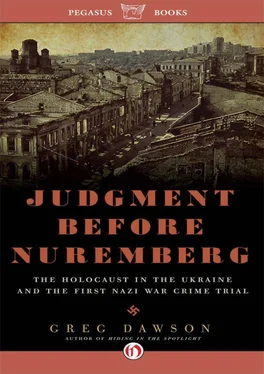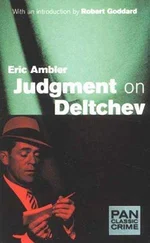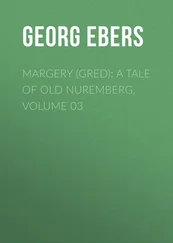Nova Ukraina, a newspaper published in Kharkov during the German occupation, reported that 1,700 families moved into new apartments in December 1941—the month my mother’s family was ordered to abandon their apartment at 48 Katsarskaya. Probably several families have occupied the apartment since then, but given the decimation of Kharkov’s Jewish population, it’s highly unlikely that Jews live there now. Collaboration with the Nazis by a minority of Ukrainians remains an exposed nerve in the body politic. I decided that whoever lives there now would not welcome my touching that nerve.
From a strictly military perspective, no city was fought over more often or fiercely during the war than Kharkov. As a major industrial center and producer of tanks, situated on the road to Stalingrad to the east, Kharkov was a strategic plum. “Kharkov, Russia’s ‘Pittsburgh,’ Captured by Nazis” said a front-page headline in The Bismarck (North Dakota) Tribune on Oct. 25, 1941. It changed hands four times during the war and was the largest Soviet city occupied by Germans (its pre-war population of about 900,000 was actually larger than that of Kiev). Seventy percent of Kharkov was destroyed during the Nazis’ on-again-off-again 22-month occupation of the city from October 1941 to August 1943, when it was liberated for good by the Red Army.
The Germans destroyed fifty industrial plants, the railway junction, power stations, telephone and telegraph connections, medical and educational institutions, and most of the city’s bridges. The 70% figure would have been much higher if the Soviets had not dismantled many factories—among them the tractor works near Kharkov used by Nazis as a ghetto—and shipped the parts east to the Urals before the Germans arrived. Much of the industrial infrastructure left behind was destroyed by the Soviets under Stalin’s “scorched earth” edict.
“Along the battle-scarred Ukrainian countryside, a thin mantle of snow falls to hide or soften the hideous panorama of destruction that unfolds mile after mile,” Edmund Stevens, a correspondent for The Christian Science Monitor , wrote in December 1943 from Kharkov. “Twisted rails, burnt-out railway cars, wrecked tanks and armored cars and guns are strewn helter-skelter alongside the track. The train halts where cities and towns once stood, but little now remains save shell-pitted walls. Even trees planted along the right of way are blasted and broken from shellfire.”
In the hierarchy of Nazi crimes committed in Kharkov, the destruction of commercial, industrial, and military infrastructure—commonplace targets in war—must rank beneath their larger attempt to disembowel the cultural life of the community and to usher in a new Dark Age. A week after taking Kharkov in October 1941, the Nazis ordered the closing of all institutions of higher learning—more than forty—in the city. All valuable resources, including apparatus for splitting the atom, files, and books, were either shipped to Germany or destroyed.
“Under the Germans, Kharkov’s cultural life was completely interrupted,” Stevens wrote. “They did not so much as open one library or bookstore for the distribution of books and magazines, even Nazi propaganda.”
The war on literacy was consistent with Himmler’s vision of transforming Ukraine into a German colony—a “Garden of Eden” in the East—in which the servant/slave natives would receive only enough education to recognize and sign their names. As if to drive home the point while adding insult to injury, the Germans put in charge of eviscerating the great universities of Kharkov “mostly semiliterate noncommissioned officers,” Stevens wrote. “Professors and researchers were denied any food ration and either starved or eked out a miserable existence by making boot polish, soap, candles or other small commodities.”
The Germans occupied Kharkov, on and off, for nearly two years, and took the opportunity to commit—even for them—some of their most macabre atrocities there. No person or place was immune to Nazi terror, even wounded soldiers in a hospital. In trial testimony, a hospital worker—one of many witnesses to this particular horror—described the scene at the First Evacuation Hospital of the 69th Army, where Red Army soldiers were being treated.
“In the 8th block of the hospital there were 400 seriously wounded men who needed immediate surgical attention. They were either in the operating theater or being prepared for operating when a dull explosion occurred. The nurses ran toward me shrieking. SS men had driven up to the hospital, nailed up all the entrances and hurled two incendiary bombs into the premises. The first floor was at once enveloped in flames. The fire reached the beds of the wounded. With their clothes burning, they crept toward the windows. Many were so weak they fell dead after crawling a few steps. Those who reached windows and climbed onto sills were shot with tommy-guns by SS troops who had surrounded the building. Similar scenes took place on the second floor, which the fire soon reached.” [2] Ignatik Federovich Kladov, The People’s Verdict: A Full Report of the Proceedings of the Krasnodar and Kharkov German Atrocity Trials (Hutchinson & Co., London 1944).
The Nazis were nothing if not thorough exterminators. They returned to the hospital the next day, the deputy superintendent of the hospital testified.
“The Germans made a round of the other blocks—ward after ward, basement after basement. Coming to a ward, they would first toss several grenades into it, fire a burst from a tommy-gun, then enter the ward and finish off those who were still alive. Wounded men, who, by some miracle, escaped with their lives, later told me that the Germans were accompanied by an officer who flashed a torch into all the corners. On approaching each bed and ascertaining that the patient was dead, he would say: ‘Kaput,’ and walk on.” [3] The People’s Verdict .
But all work and no play makes Hans a dull boy. After transforming the hospital into an abattoir, the Nazis amused themselves with a coup de grâce.
“They found a man still alive in one of the basements,” said a hospital worker. “They dragged him into the yard and were about to shoot him. One German was already aiming his tommy-gun when another said something to him, and both burst out laughing. The first German ran off and soon returned with a hammer and nails. The Germans seized the half-dead man, stripped him naked, and nailed him to a wall for the amusement of themselves and other German monsters.” [4] The People’s Verdict.
On the flip side, one element of Ukrainian society that flourished during the Nazi occupation was the Christian religion, which was anathema to Stalin’s secular communist state. Church leaders, especially in western Ukraine in the early stages of German rule, greeted the invaders as liberators from Stalin’s godless tyranny. Also liberated and given fresh voice was the anti-Semitism endemic in Ukrainian churches. Pastoral leaders did not use the word “Jews,” but it was easy to read between the lines when the leader of the Ukrainian Autocephalous Church praised Hitler for “conducting a tireless and uncompromising struggle against the anti-religious communist regime,” code language for the boogieman of “Judeo-Bolshevism.”
The non-action of church leaders in the face of violence against Jews spoke louder than their words. Early in Operation Barbarossa, the Nazis had seeded Soviet territory with anti-Semitic propaganda in the hope of inciting “spontaneous” pogroms. “Thousands of Jews were murdered by incited mobs, even before the Einsatzgruppen began their murderous operations,” Arad wrote. “The heads of the churches were silent when their followers carried out these atrocities.” [5] Arad, The Holocaust in the Soviet Union , 443.
Читать дальше












